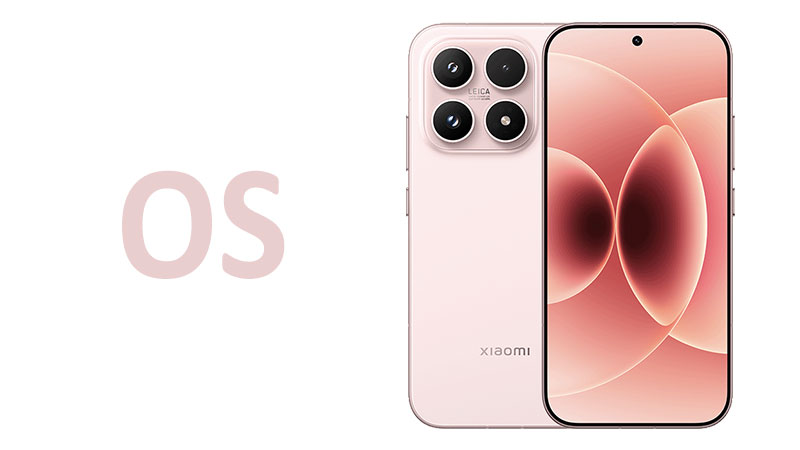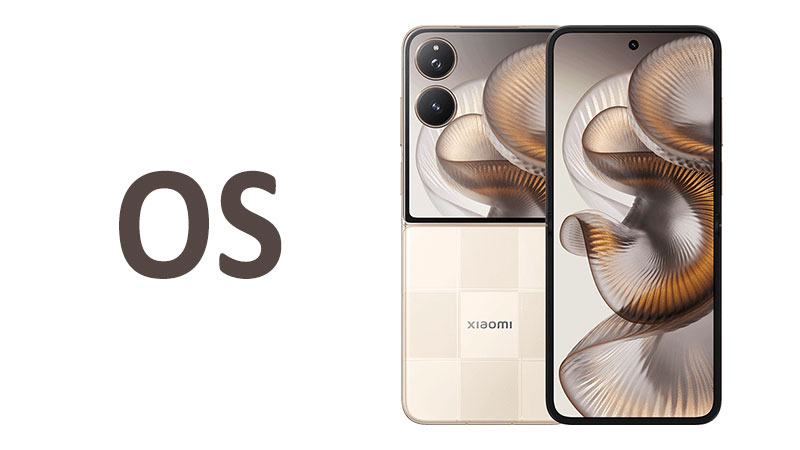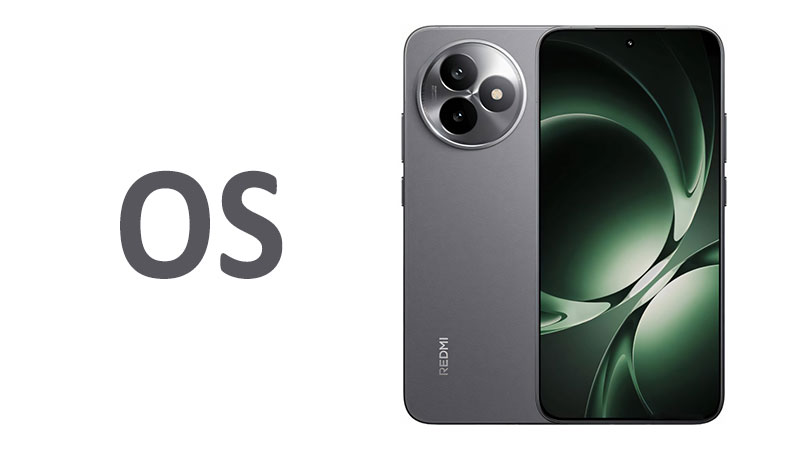The Xiaomi 17 OS brings a massive generational leap in smartphone software. It combines the fundamental power of the new Android 16 base with Xiaomi’s own deep customization layer. This custom layer is the highly anticipated HyperOS 3. This comprehensive review explores every key feature of this powerful dual-platform system. We will analyze the impact of Android 16 on core performance and security. We will also evaluate how HyperOS 3 transforms the user experience and device connectivity.
The Dual Architecture: Android 16 Meets HyperOS 3
The operating system powering the Xiaomi 17 is a layered marvel. The foundation utilizes the robust and secure Android 16 kernel and APIs. This choice ensures access to the latest platform-level innovations from Google. Layered on top is the bespoke Xiaomi HyperOS 3 environment. This overlay manages aesthetics, proprietary features, and the extensive Xiaomi ecosystem. This unique structure aims to deliver peak performance and a cohesive experience.
HyperOS is not a simple skin over Android anymore. Xiaomi designed it as a fully integrated operating system. This integration allows for precise resource allocation and management. The result is a system that feels fluid and responsive. Previous MIUI iterations sometimes felt bloated or slow. HyperOS 3 promises to solve these historical performance concerns. It leverages the lower-level efficiencies provided by Android 16.
Android 16: Core System Enhancements
Android 16, the base of the Xiaomi 17 OS, delivers critical platform upgrades. These improvements focus mainly on privacy, accessibility, and system performance. Google’s dedication to user security is evident in several key features. These features directly benefit every user of the Xiaomi 17.
Enhanced Security and Privacy Protocols
Android 16 significantly strengthens device safety. The new Theft Detection Lock is a crucial addition. It uses on-device AI to recognize unauthorized device movement. If the system detects theft, it automatically locks the phone. This feature provides a robust layer of protection for personal data.
The Advanced Protection Mode offers enhanced security against sophisticated attacks. This mode helps public figures and security-conscious users. It defends against malicious apps and scam calls more effectively. Furthermore, sensitive notifications are automatically hidden on the lock screen. This prevents others from viewing private information at a glance. Even one-time passwords (OTPs) remain concealed from the lock screen view.
Specialized Comparison: Android 16’s Theft Detection Lock surpasses previous Android versions. Older systems only relied on remote wiping or manual device locking. The new proactive, location-aware locking mechanism is superior. It offers peace of mind to users globally.
System Efficiency and User Experience Upgrades
Google continues to refine the user interface with Material 3 Expressive. This new design language emphasizes animation and color. It allows for better contrast and greater personalization options. The system’s responsiveness improves through a new motion physics engine. Transitions feel smooth and much more natural.
Android 16 introduces the Notification Cooldown feature. This reduces distraction from rapid bursts of notifications from one app. The system temporarily lowers the alert volume. It minimizes alerts for up to two minutes during busy periods. Live Updates, or progress-centric notifications, are another key feature. They allow users to track real-time app status directly in the notification bar. Think of tracking food delivery or ride-share arrival times easily.
Pros of Android 16 Foundation:
- Superior, proactive theft and scam protection.
- Improved motion physics for smoother device feel.
- Notification Cooldown reduces digital fatigue effectively.
Cons of Android 16 Foundation:
- New security settings can sometimes require more user permissions management.
- Material 3 Expressive relies heavily on color theming. This may not appeal to users preferring simpler, monochrome designs.
HyperOS 3: The User Experience Revolution
HyperOS 3 is Xiaomi’s interpretation of Android 16. It is built on the company’s ambitious HyperCore architecture. This operating system aims to unify Xiaomi’s entire ecosystem. This includes phones, tablets, smart home devices, and electric vehicles. The “Human-centric” philosophy drives the design and feature set.
Performance and Architecture: HyperCore
Xiaomi engineered HyperCore for maximum efficiency and minimal footprint. The system firmware on smartphones is remarkably lightweight. This is a significant improvement over the large install sizes of many competitors. HyperOS 3 boasts highly optimized resource management. It uses dynamic thread priority adjustment for peak performance.
The lightweight design means faster app startup times. It also translates directly into better power efficiency. The refined scheduling capabilities ensure that the phone’s hardware operates optimally. This is true even in complex, multi-tasking scenarios.
Specialized Comparison: HyperOS 3’s HyperCore is designed to be more efficient than its predecessor, MIUI. Older MIUI versions were often criticized for battery drain and memory consumption. HyperOS 3 uses its low-level access to deliver measurable performance improvements. It sets a new standard for Xiaomi software optimization.
Alive Design Philosophy and Interface
The aesthetic overhaul in HyperOS 3 is one of its most visible changes. The “Alive Design” philosophy introduces a fresh, vibrant visual experience. System-wide animations have been meticulously refined. They provide a fluid and seamless look during all interactions.
Cinematic Lock Screen and Iconography
The Lock Screen offers extensive new customization options. Users can add cinematic depth to the clock and use AI styles on images. This feature is known as the Movie Lock Screen. AI can “Ghibli-fy” or add a dreamscape effect to photos. This creates stunning dynamic visuals upon unlocking the device.
The home screen features all-new, refined icons. These icons appear slightly more three-dimensional. The overall layout is cleaner and more uniform. The Control Center has also been reorganized for better accessibility. It centralizes customization options for the home screen and Always-On Display.
The HyperIsland Feature
HyperOS 3 introduces the Xiaomi HyperIsland, similar to previous dynamic elements. This feature centers around the selfie camera cutout. It provides crucial glanceable information and live activity updates. Users can interact with the pill-shaped notification area. Swiping down on it can open a floating window for the current app. This provides quick access to ongoing tasks without interrupting the main screen.
Pros of HyperOS 3 Interface:
- Visually stunning and highly customizable lock screen effects.
- HyperCore architecture ensures exceptional speed and efficiency.
- The system is highly lightweight, consuming less storage space.
Cons of HyperOS 3 Interface:
- Some users might find the AI-generated visuals to be excessive or distracting.
- The extensive customization might overwhelm users who prefer a simpler, stock Android look.
HyperAI and HyperConnect: Intelligence and Interoperability
The true power of the Xiaomi 17 OS lies in its intelligence and connectivity layers. HyperOS 3 deeply integrates AI, specifically leveraging Google’s Gemini models. It also uses the HyperConnect framework to achieve seamless cross-device communication. These features are designed to create a unified smart ecosystem.
HyperAI: Proactive Intelligence
HyperAI transforms system applications using large foundation models. The Xiaomi AI Assistant gains significant text generation capabilities. Users can access features like speech generation and sophisticated summarization.
AI Enhanced Productivity
The Notes application now features a DeepThink mode. This mode generates thoughtful insights and high-quality content based on user input. New AI writing features can refine, expand, or correct text across the system. This acts as a powerful writing assistant accessible anywhere. The system also offers AI audio recognition for real-time transcription. It can also automatically summarize recordings and mark different speakers.
Advanced image search capabilities use AI to optimize results. It supports tens of thousands of keywords and numerous categories. The AI can even aggregate photos of specific pets using their body features. This makes searching photo albums fast and accurate.
Important Points for the Reader: HyperAI leverages both cloud and on-device processing. This ensures speed for common tasks while maintaining data privacy. Users must understand that many advanced features require an active internet connection.
HyperConnect: Cross-Device Ecosystem
HyperConnect is the critical piece for Xiaomi’s “Human-centric” vision. It shatters the boundaries between the smartphone and other devices. This framework creates seamless interactions across phones, tablets, and computers.
Seamless Interoperability
The Integrated Device Center allows users to control nearly their entire connected device array. They can manage the interconnected ecosystem from the phone effortlessly. Features like touch-to-share enable quick transfer of files and Wi-Fi passwords. This touch-to-share functionality works even with non-Xiaomi devices, including iPhones.
The Home Screen+ feature further enhances productivity. Users can mirror phone apps onto a Xiaomi tablet or laptop display. They can run these apps in resizable, desktop-style windows. This supports true multi-window multitasking on large screens. Other continuity features include shared clipboards and instant hotspot connectivity. Users can also unlock their Xiaomi phone using their paired MacBook’s Touch ID.
Specialized Comparison: Xiaomi’s HyperConnect aggressively challenges competitors like Samsung DeX and Apple Continuity. Unlike DeX, which requires a separate desktop mode, HyperConnect integrates phone apps directly into existing desktop environments. Its cross-ecosystem support, specifically with Apple products, gives it a unique competitive advantage. This bridges a gap most other Android manufacturers neglect.
Pros of HyperAI and HyperConnect:
- Agentic AI can execute complex, multi-step tasks on behalf of the user.
- Unrivaled cross-ecosystem connectivity, including support for Apple hardware.
- HyperConnect boosts productivity with seamless multi-device usage.
Cons of HyperAI and HyperConnect:
- Reliance on the broader Xiaomi ecosystem limits the feature set for non-Xiaomi users.
- The extent of AI integration raises inevitable long-term privacy concerns for some.
The Buyer’s and Reader’s Guide to Xiaomi 17 OS
Potential buyers and tech enthusiasts must consider several factors before embracing this new operating system. The Xiaomi 17 OS combines high-end hardware optimization with complex, feature-rich software. This section outlines key considerations.
Stability and Regional Variations
Early versions of any major new OS can sometimes face stability issues. HyperOS 3 is no exception as it rolls out globally. Xiaomi has a history of regional software differences. Users should expect variations in AI feature availability based on their geographic location. Some advanced AI functions might be exclusive to the Chinese market initially. Global users should check reviews specific to their region for the latest updates.
The Learning Curve for Customization
The degree of customization in HyperOS 3 is both a strength and a weakness. Users new to Xiaomi devices will face a steeper learning curve. Features like the Cinematic Lock Screen and Super Island require adjustment. Dedicated stock Android users might initially prefer a simpler UI layout. However, the system’s flexibility rewards users who invest time in personalization.
Battery Life and Performance Trade-offs
The HyperCore architecture promises superior battery life. It achieves this through efficient scheduling and a lightweight kernel. However, using high-demand features can still impact longevity. Constant use of AI dynamic wallpapers or running multiple mirrored apps via HyperConnect will consume battery faster. The performance gains are significant for general use and gaming.
The Ecosystem Lock-in Strategy
HyperOS 3 strongly encourages users to adopt the full Xiaomi ecosystem. The best features, such as split-task processing and integrated control, work only between Xiaomi devices. While it offers iPhone connectivity, the experience is best when using a Xiaomi phone, tablet, and smart TV together. Buyers should know they maximize the OS’s potential by investing in multiple Xiaomi products.
Software Update Commitment
Xiaomi’s commitment to delivering timely and consistent updates is important. Flagship devices like the Xiaomi 17 usually receive four years of Android upgrades. They often receive five years of security patches. Prospective buyers should verify the exact support timeline for their device model. This longevity ensures the phone remains secure and feature-rich for years.
Pros of the Xiaomi 17 OS:
- Exceptional performance optimization thanks to the HyperCore rewrite.
- Cutting-edge AI features driven by Gemini for productivity and creativity.
- Industry-leading cross-device connectivity, even supporting non-Android products.
- A visually impressive and highly customizable user interface design.
Cons of the Xiaomi 17 OS:
- Feature parity may vary between the Chinese and Global software versions.
- The full benefits require owning multiple Xiaomi or partner devices.
- Aggressive customization can feel complex to users accustomed to stock Android.
- Historical concerns about battery optimization on mid-range devices persist.
Conclusion: A Next-Generation Mobile Platform
The Xiaomi 17 OS, built on Android 16 and HyperOS 3, represents a pivotal moment for Xiaomi. It is more than just a software update. It is a fundamental shift toward an interconnected ecosystem. Xiaomi has successfully leveraged Android 16’s security improvements and performance base. They then overlaid a sophisticated, feature-rich, and highly efficient custom experience.
HyperOS 3 stands out due to its advanced AI and superior connectivity solutions. The HyperCore architecture promises raw speed and efficiency. Features like HyperIsland and the Cinematic Lock Screen add flair and functionality. Consumers seeking the pinnacle of mobile innovation and a seamless device experience should consider this OS. Users must evaluate if they are prepared to embrace the larger Xiaomi ecosystem. This system is a powerful, integrated alternative to competitors’ offerings. It elevates the flagship Xiaomi 17 experience considerably.
Frequently Asked Questions (FAQ)
1. Is HyperOS 3 based entirely on Android, or is it a new OS?
HyperOS 3 uses the core kernel and security features of Android 16. It is not a completely new operating system. Xiaomi built it using a customized layer called HyperCore. This layer replaces much of the standard Android UI and framework.
2. Does the Xiaomi 17 OS support Google services?
Yes, the global version of the Xiaomi 17 OS fully supports Google Mobile Services (GMS). Users can access the Play Store, Gmail, and other Google applications. This integration ensures seamless Western app compatibility.
3. What is the key difference between HyperOS 3 and the previous MIUI?
HyperOS 3 is a complete architectural refactoring called HyperCore. It is designed to be lightweight and more efficient than MIUI. It also focuses heavily on cross-device connectivity and deep AI integration.
4. Will I still be able to customize the look of the Xiaomi 17 OS?
Customization is a major focus of HyperOS 3. It offers extensive control over the lock screen, icons, and themes. The new Alive Design philosophy provides many tools for personalization.
5. What is the HyperConnect feature and who benefits most from it?
HyperConnect enables seamless collaboration between devices. It allows mirroring phone apps to tablets or laptops. Users who own multiple Xiaomi devices benefit most from these cross-device features.



